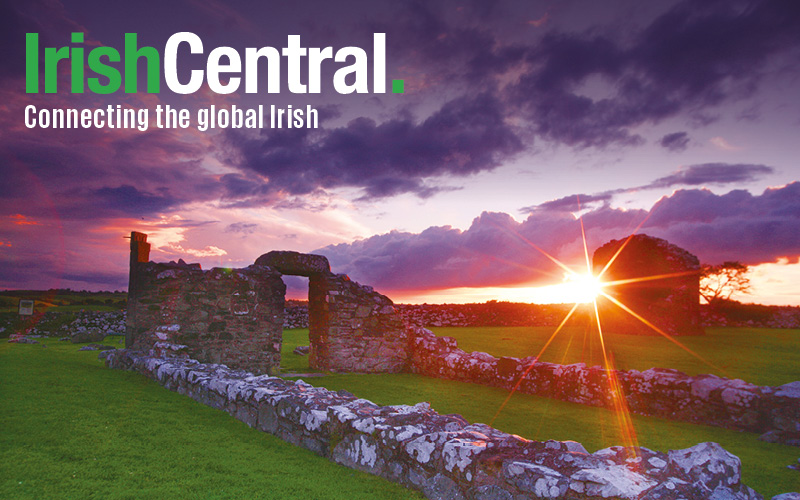New figures from the Organisation for Economic Co-operation and Development (OECD) show that one in six people born in Ireland are currently living abroad, the highest of any country included in the study.
Taking figures from the 12 months leading up to April 2015, the OECD established that 17.5 percent of people born in Ireland now aged over 15 years old were living overseas in 2014, topping the survey of 34 countries.
This is not surprising when coupled with recent figures from the Irish government's Central Statistics Office (CSO) showing that between 2007 and 2014, there has been a drastic decrease in the number of people in their 20s in the Irish population; a 34 percent drop in the number of 20 to 24-year-olds, and a 27.5 percent drop in 25 to 29-year-olds.
In May of this year, the Irish Government predicted that the current wave of Irish emigration would come to an end by 2017 and that the number of people emigrating would be less than the number of those returning by that time.
Speaking on figures from the CSO, Irish Minister for Finance, Michael Noonan, announced that Ireland would see an end to net outward migration (more people leaving Ireland than moving/returning to the country) by 2016, with a return to net inward migration by the following year.
Ireland has highest share of natives living overseas among the OECD countries http://t.co/qmdJdoY4Gi @ciaraky pic.twitter.com/8Uydj0ftTw
— Irish Times Data (@IrishTimesData) September 16, 2015
17% of Irish born people live outside Ireland. Finally, Ireland is the leading OECD country in something. http://t.co/XAsayQ0Ebr
— Bryan Lougheed (@bryanlougheed) September 16, 2015
The latest OECD figures make this prediction increasingly unlikely, however, as Ireland outranks New Zealand and Portugal at 14 percent; and Mexico, Luxembourg and Iceland at 12 percent of their over-15 population living in a different country to their birth.
The figures, released in a chapter on migration in the OECD’s biennial report on the Irish economy, note that Ireland had enjoyed a period of low emigration during the Celtic Tiger paired with a high level of immigration. This scenario quickly changed in the latest Irish recession with many of those who moved to Ireland during the boom leaving again, along with many people who had been born in Ireland. The OECD states that the “resulting population outflow has been large, both by international and Irish historical standards”.
Although, as CSO figures outline, emigration has been in decline again recently, the numbers leaving the country still remain high.
Between 2009 and 2010, net inward migration jumped from 1,600 people to a net outward migration of 27,500 people. Net outward migration continued to grow in the following years, reaching a peak of 34,400 people in 2012. Since then, it has declined slightly, and was 21,400 in 2014, which represented a drop of 35% from the previous year.
> Ireland - Crude rate of net migration plus statistical adjustment (%) pic.twitter.com/FMtOZgoEQr
— Nick (@MacroTragedy) September 5, 2015
In the year leading up to April 2015, 80,900 people of all nationalities left Ireland—including 35,300 Irish nationals—1,000 fewer than the previous 12 months.
The number of Irish nationals leaving also fell by 13.5 percent but not enough to convincingly back up the Government’s predictions.
“Emigration has played an important role in Ireland as a macroeconomic adjustment mechanism, preventing unemployment rates above the 20 percent seen in other crisis countries and limiting scarring effects of being out of work. But it also entails trade-offs and risks,” the report said.
Poor job prospects, poor salary prospects and high unemployment have resulted in a wave of emigration among Ireland’s college graduates, removing it as one of the largest youth cohorts in the OECD.
Not only were college graduates in Ireland in 2014 receiving salaries that were 12 percent less than the average in 2007, but the embargo on public sector recruitment in the country also had a vast impact on the prospects of those graduates working in the health and social work sectors. The OECD figures in fact show that one in five Irish emigrants are working in those sectors in their new countries.
The figures from the OECD are not completely doom and gloom, however. Although they do not completely align with the government prediction, the report states that emigration will continue to fall and immigration will continue to rise, gradually leading towards a positive inward net migration, just not by 2017.
The report also finds that in order to achieve this Irish immigrants must be given greater incentives to return home such as tax incentives, available affordable housing and childcare, and a higher standard of education and health-care provision.
#Ireland is the "comeback kid" of Europe’s crisis-hit economies: @A_Gurria, on OECD survey http://t.co/jSnGGOIILW pic.twitter.com/4aTJBUpAFZ
— OECD (@OECD) September 15, 2015
OECD show childcare costs in Ireland the worst across OECD countries pic.twitter.com/bkRXFCD6Nm
— Conall Mac Coille (@ConallMacCoille) September 15, 2015
The OECD further suggests that strengthening the connection Irish immigrants maintain with their country while living abroad could act as another incentive to encourage them to come home. One possible way to do this, they suggest, could be the introduction of an emigrant vote in Irish elections.
“Allowing for the participation of Irish emigrants in [the] domestic electoral process would reinforce their attachment to Ireland, would bolster the linkages that Ireland has been successfully building over the years, and would make a positive contribution to emigrants’ wellbeing,” the report finds.
The OECD is an international economic organization consisting of 34 countries that look to stimulate world trade and economic progress by using research on their own country’s economy as a platform for comparing policies, seeking answers to common problems, and identifying good practices.




Comments